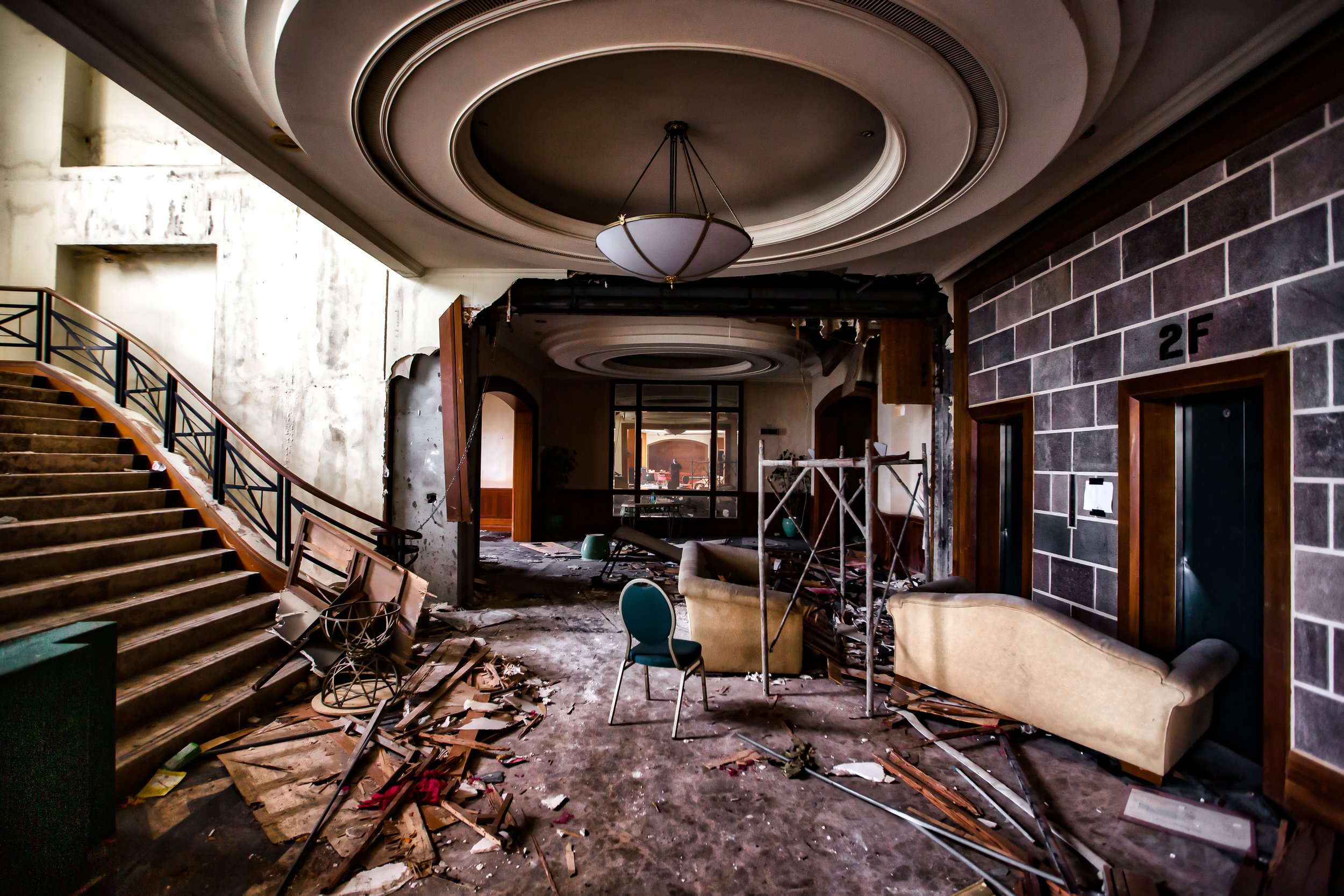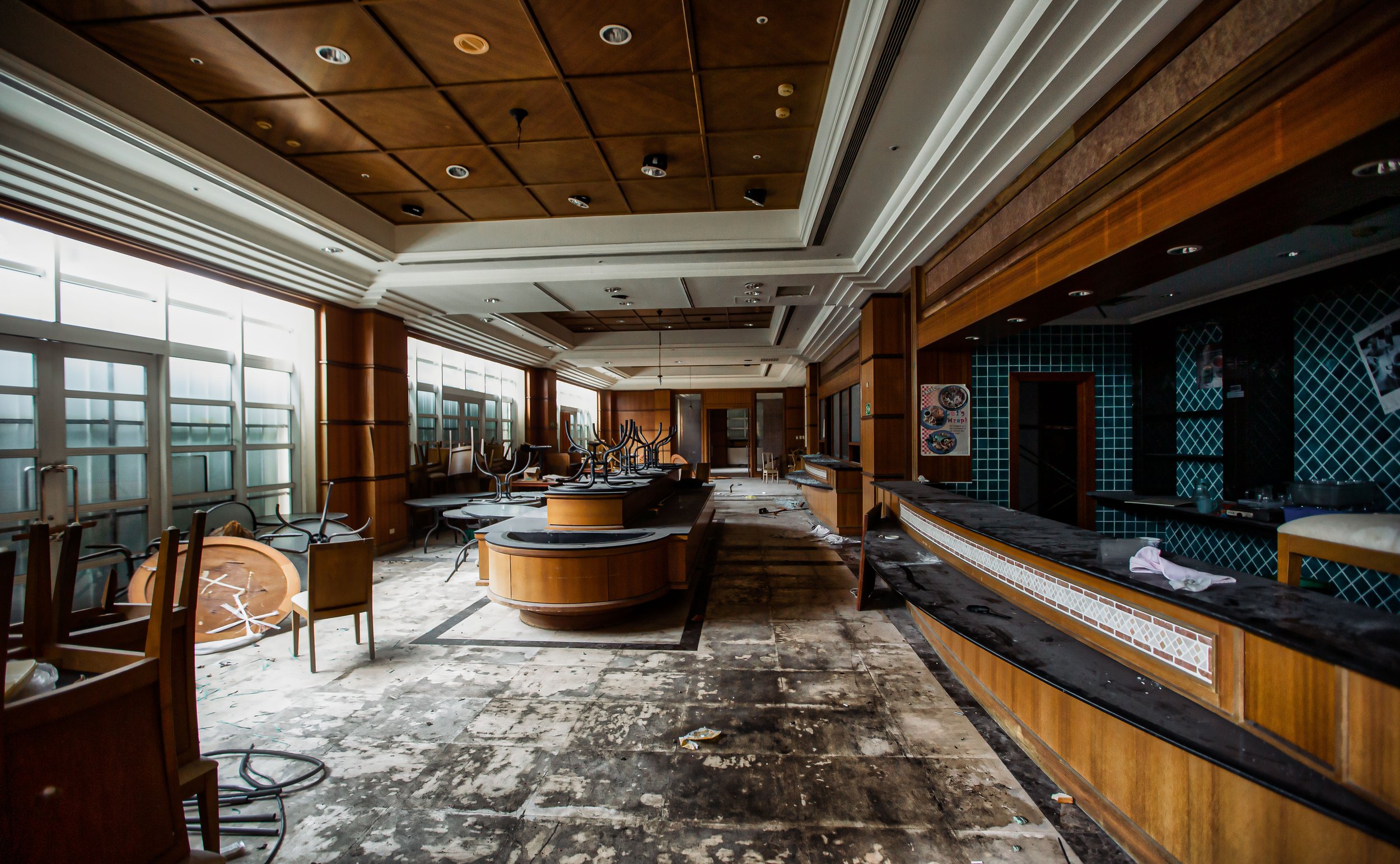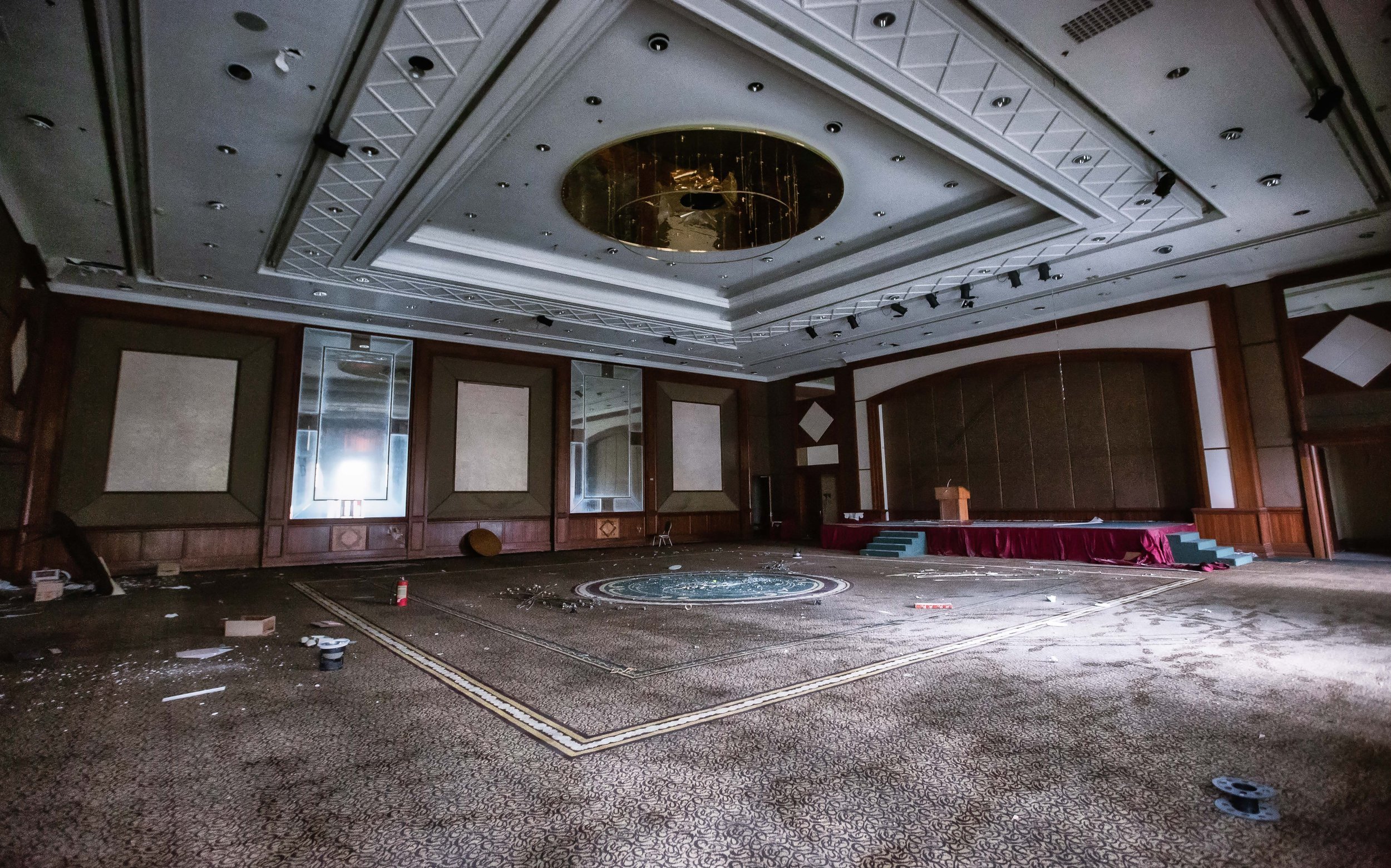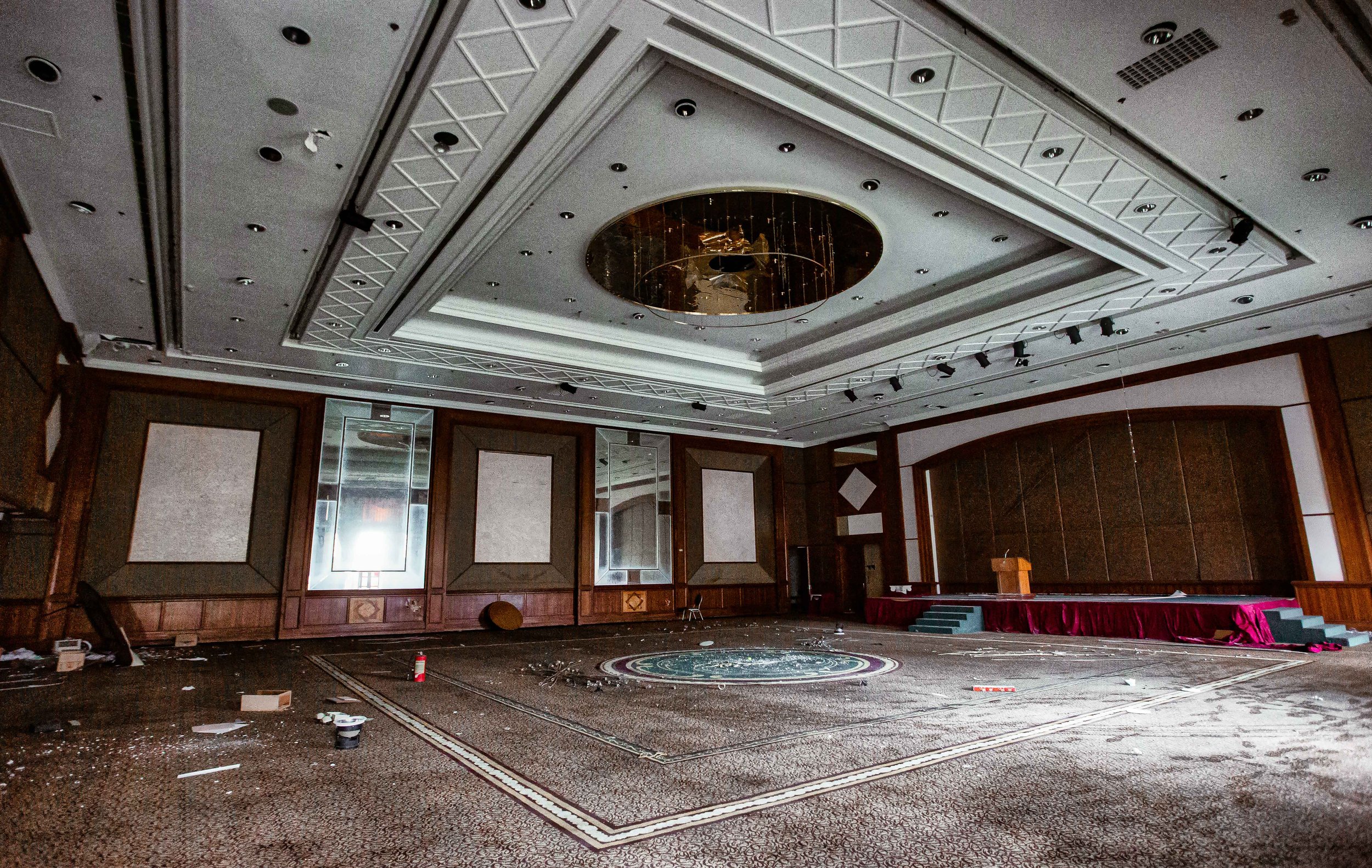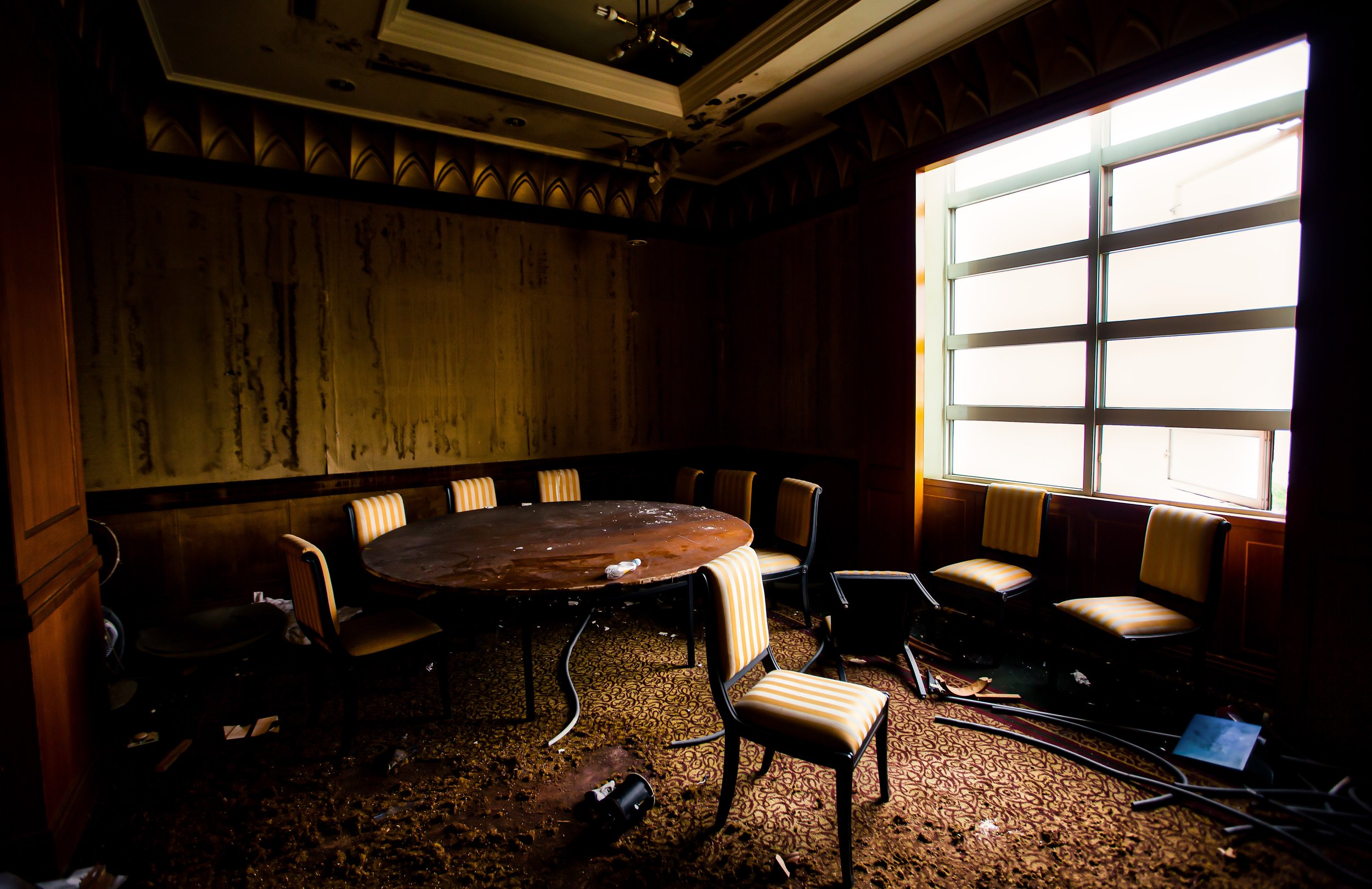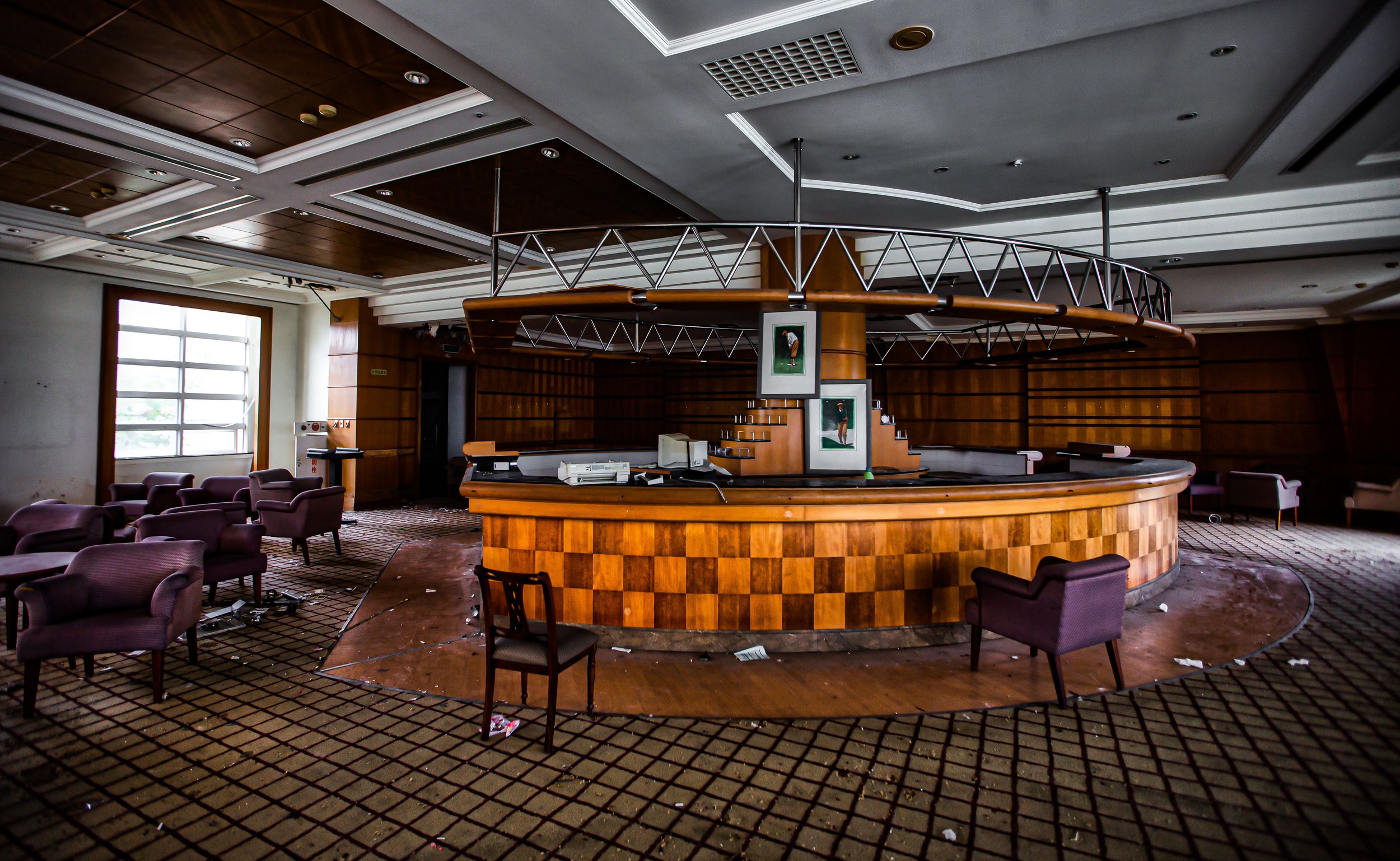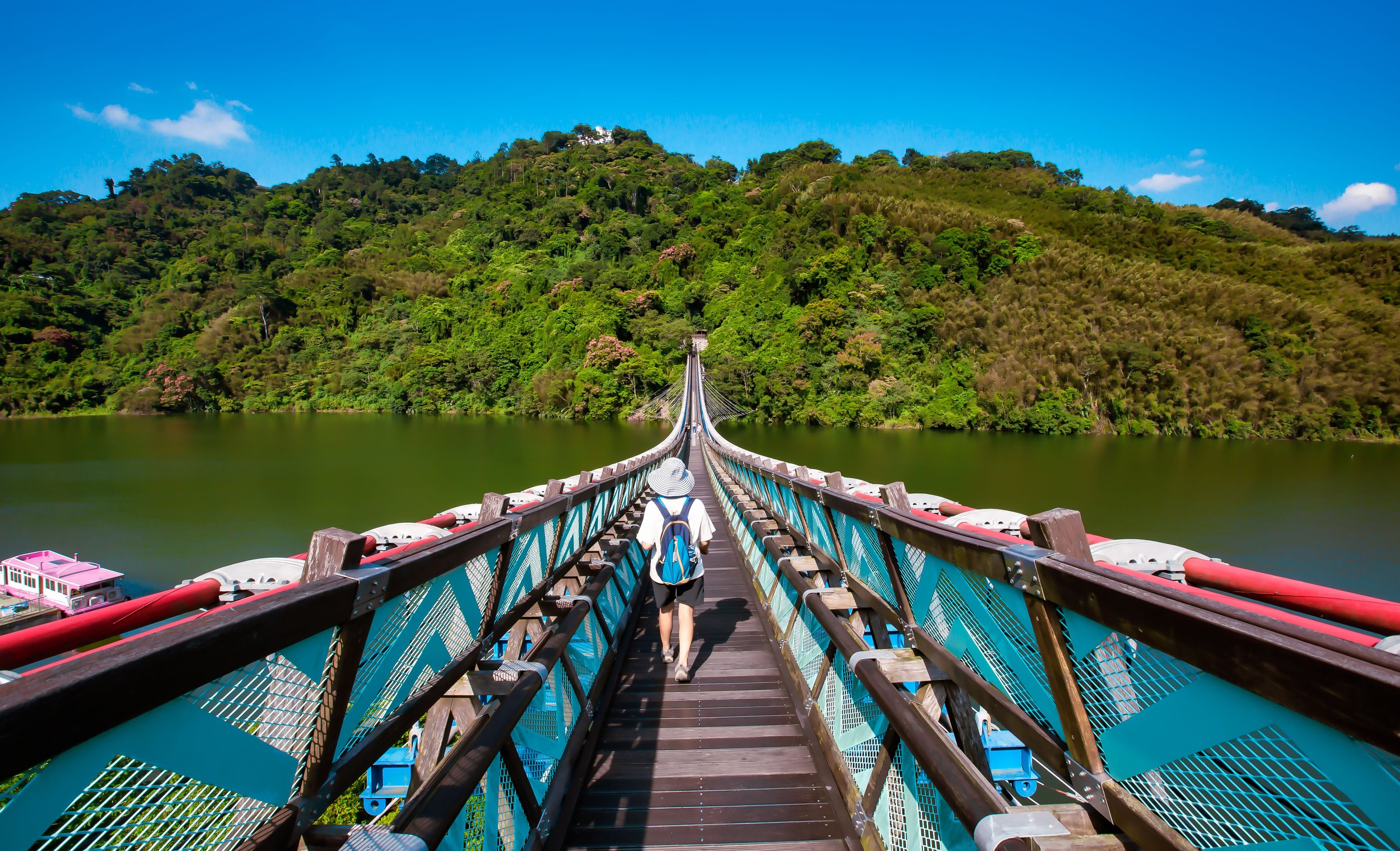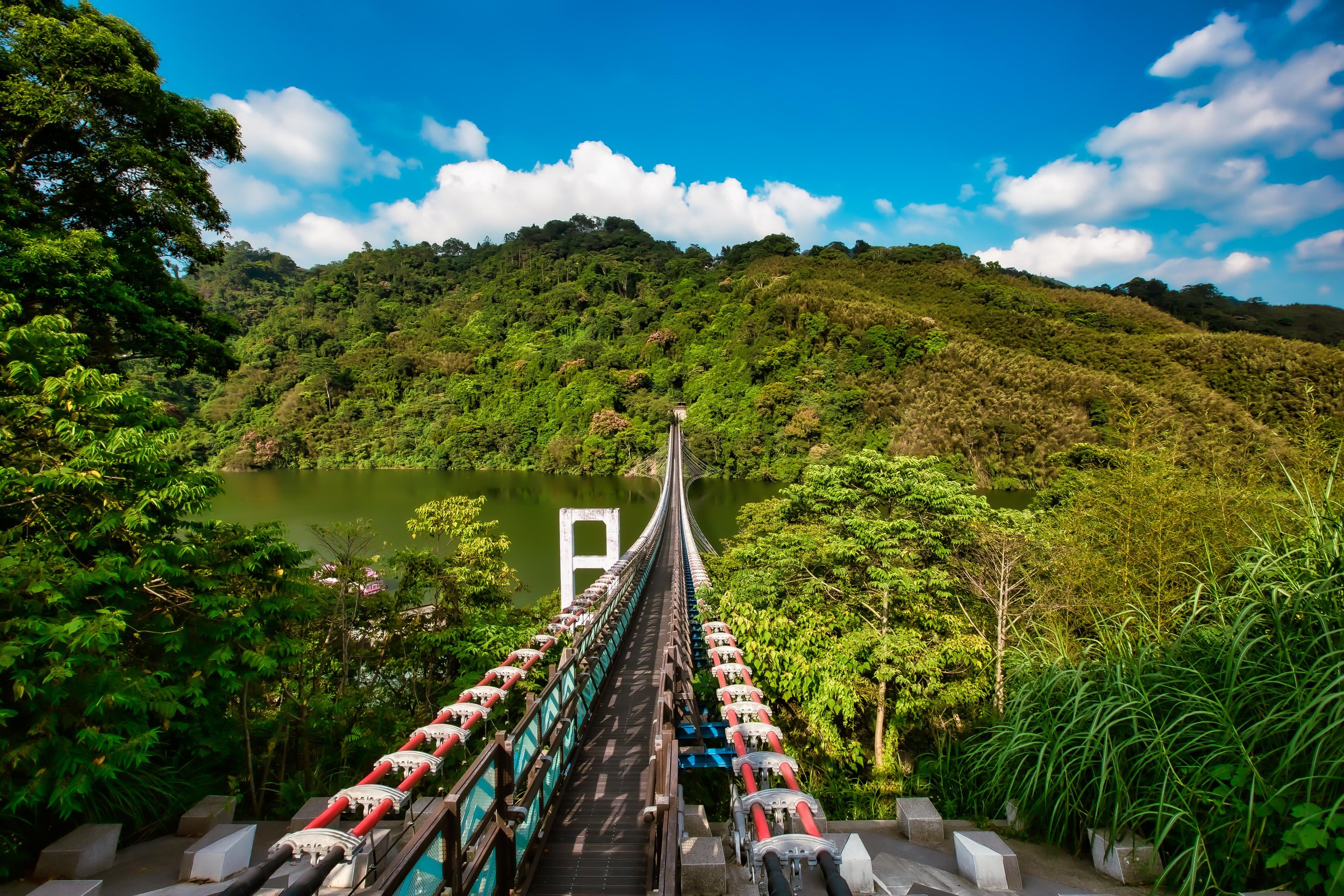Most foreign visitors to Taiwan seem to agree that Taipei and Tainan are the best places to visit while in the country - Taipei for its modern vibes and Tainan for all of its history and its amazing cuisine - so with a visit to both of these cities, you can learn all you need to know about both the nation’s past and its future.
Personally, I don’t really feel like you need to travel from one end of the country to the other to experience either of these, especially since a short trip to Hsinchu can satisfy both in a single trip.
With Hsinchu, we’re blessed with an ever-growing city on the cutting edge of technology that just so happens to also be rich in Taiwanese history, traditional culture and a local cuisine of its own.
I fell in love with Hsinchu on my first visit and as the city continues to develop, it’s very likely that I’ll continue to sing its praises as there is always something new and exciting to do while in town.
If you haven’t had the opportunity to spend any time in the city, I highly recommend taking some time to explore all that it has to offer, since it’s only a short train ride from the capital, and especially since there are so many hip restaurants, coffeeshops, museums and historic locations to check out.
Over the next few months, I’ll have a number of new Hsinchu-related articles as the city has invested a considerable amount of funds into the preservation of its cultural heritage, spanning the two hundred years of its development into one of Taiwan’s most important cities.
Today, I’ll be introducing one of the city’s historic Japanese-era destinations, conveniently located within the downtown core of the city, and yet another tourist destination within walking distance of the equally historic railway station. As an official residence for a Japanese-era civil servant, the building is a bit more posh than some of the other civil servant dorms I’ve written about in the past, but given Hsinchu’s strategic importance to the Japanese, the beauty of this building shouldn’t come off as a big surprise.
For day-trippers to the city, this is yet another location within the downtown core that can help you get a better feel of the history of this important city as well as one of its most prominent citizens over the past half century.
Shinchiku High School Principal’s Residence
Writing about the ‘residences' provided for civil servants during the Japanese-era is a topic that I’ve been researching for quite a while, with dozens of articles on the topic already published. One of the most obvious takeaways is that if you were a professionally trained civil servant immigrating to Taiwan, one of the benefits was that housing would be provided - in some cases shared dormitories - or for higher ranking officials, a residence for their entire family.
These civil-servant dormitories, or residences were provided for government officials of all levels ranging from the police, educators, engineers, railway workers, etc. Today, many of the Japanese-era residences that remain across the country were once property of the colonial government, and were provided on a provisional basis to those working to help develop the island.
That being said, not every residence provided by the government would have been a comfortable living experience - Many of the laborers in the timber or sugar industries were provided with shared dwellings, much like a university dorm-like environment. Similarly many of the lower-ranking teachers who came to Taiwan were placed in shared residences where a number of co-workers would live in the same space.
Higher ranking officials, such as school principals on the other hand were provided with far more elaborate homes for their entire family. These larger buildings offered a much more comfortable living experience than the average worker would have enjoyed and were luxurious enough that they likely would have enticed their residents to stay longer.
The residence provided for the principal of the Prefectural Shinchiku High School (新竹州立新竹中學校) in Hsinchu is by far one of the best examples I have encountered, when it comes to the high standard of living that school principals were provided with. The large home came fully equipped on prime real estate in the downtown core of the city, and even featured a large yard for the family to enjoy.
Interestingly, when it comes to the residences provided for school staff, they were almost always constructed next to the school for convenience purposes. This principal’s dorm however is located on the opposite side of the train tracks from the school, which would have made the daily commute a long one.
To understand why this is the case, we first have to take a look at the school’s history.
Established in 1922 (大正11年), the Prefectural Shinchiku High School was originally located in the downtown core of Hsinchu, close to the railway station. The school was initially split up and shared space within the Shinchiku First Public School (新竹第一公學校), in addition to a newly constructed building just opposite where the principal’s residence is located today. However, with plans to expand and restructure the educational infrastructure in the prefecture, the location was only a temporary one as a massive campus was at the same time undergoing construction at the base of Eighteen Peaks Mountain (十八尖山).
Completed in 1925 (大正14年), the Prefectural Shinchiku High School changed the landscape of public education in Shinchiku Prefecture, providing space for three classes per grade with seats for one hundred Japanese nationals and fifty Taiwanese students (even three decades into the colonial era, preferential treatment was still afforded to Japanese nationals), with a total student population of around five hundred pupils per year. For much of its history, the prestigious high school, known today as National Hsinchu Senior High School (國立新竹高級中學) was primarily a male-only school, which is an important thing to keep in mind regarding the educational restructuring plan mentioned above.
When the boys high school moved in 1926, the Shinchiku First Public School was converted into a public elementary school, while the downtown campus vacated by the boys high school became the Shinchiku Prefectural Girls' High School (新竹州立新竹高等女學校), offering primary and upper education for the children of the prefecture.
Note: Just for clarity sake:
Shinchiku First Public School (新竹第一公學校) is currently “Hsinchu Elementary School” (新竹國民小學) and dates back to 1898.
Prefectural Shinchiku Boys High School (新竹州立新竹中學校) is currently “National Hsinchu Senior High School” (國立新竹高級中學) and dates back to 1922.
Shinchiku Prefectural Girls' High School (新竹州立新竹高等女學校) is currently “National Hsinchu Girls' Senior High School” (國立新竹女子高級中學) and dates back to 1925.
All of that said, I couldn’t find any definitive answer as to why the principals residence didn’t move to the other side of the tracks along with the school - A bit frustrated, I decided to make another trip to Hsinchu to ask one of the knowledgeable Cultural Bureau employees working inside. Suffice to say, the residence as we know it today was once part of a large community of teachers dormitories that encapsulated an entire city block within the downtown core of the city. Unfortunately, the only one that remains is the principals residence as the others have long since been torn down and replaced with high-rise apartment buildings.
As it was expertly explained to me, the community of houses were constructed in the early 1920s, along with the campus nearby. Having an already established community of houses for many of the school’s teachers and their families, most were reluctant to move. However, it’s important to note that the girl’s school next door also required similar residences for its staff, so another large group of dorms were constructed between the campus and the Hsinchu Moat. Similarly, as the boys high school grew, a number of additional dorms were constructed next to the school to accommodate the growing number of staff.
After listening to his explanation, I asked what I figured was the obvious question: “So, they walked to school every day? Wasn’t it troublesome to cross the tracks on a daily basis?” to which the expert responded: “Hsinchu was one of the busiest cities in Taiwan and the colonial government made sure that tunnels were constructed under the tracks to connect both sides of the city, just like the ones we are using today. There was essentially a traffic and pedestrian tunnel across the street from the dorms for the staff to make their way to work.“
The first principal of the Prefectural Shinchiku Boys High School was an accomplished and interesting figure named Oki Shunkuro (大木俊九郎 / おおき しゅんくろう) from Saga Prefecture (佐賀県) on southern Japan’s Kyushu Island. Arriving in Taiwan in 1921 (大正10年), Oki initially took a position as head teacher at Taichung’s Business School (臺中商業學校) before being promoted to principal of the newly established high school, where he would spend the next decade of his life.
Note: Taichung Business School (臺中商業學校) is currently the Taichung University of Science and Technology (國立臺中科技大學)
Despite being referred to today as the ‘Former Residence of Hsin Chih-Ping,” I’d argue that both of these figures were the most significant in the history of the school, hailing from different eras of Taiwan’s history. In both cases, a number of principals followed, but (not to dismiss the achievements of others) few have had as tremendous of an effect on the school as these two.
Principal Oki oversaw the establishment of the school, its migration to a new campus, the construction of new buildings on the campus, and its growth between 1922 and 1932. Known as a strict administrator, Oki ran a military-like outfit, but spent time personally training students in the art of Kendo (劍道) as well as personally maintaining the school’s gardens and floral arrangements.
Interestingly, Oki’s career in Taiwan should have lasted much longer, but his son, a doctor of note in Taipei found himself involved in an extramarital affair with a nurse at his hospital, something which Oki considered tantamount to his failure as a parent and educator. This forced him to pack up and return to Japan in disgrace - something I’m sure most people these days would consider a bit of an overreaction.
In the years after Oki left Taiwan, a number of administrators followed (five to be exact), but each of them only lasted a year or two at the most. Then, when the colonial era came to an end in 1945 and the Japanese left Taiwan, the school was renamed “National Hsinchu Senior High School” and Hsin Chih-Ping became principal, a position he’d hold for the next three decades.
Principal’s Residence Tenants (1922 - 1985)
Oki Shunkuro (大木俊九郎) - 1922 (大正11年) - 1931 (昭和6年)
Ogita Shinosamu (荻板進治) - 1932 (昭和7年) - 1936 (昭和11年)
Shiba Toshio (志波俊夫) - 1937 (昭和12年) - 1941 (昭和16年)
Matsui Minoru (松井實) - 1942 (昭和17年)
Sanya Shusaku (三屋秋策) - 1943 (昭和18年) - 1944 (昭和19年)
Hsin Chih-Ping (辛志平) - 1945 (民國34年) - 1985 (民國74年)
Living there well after his retirement, the house was left abandoned after Hsin passed away in 1985 (民國74年) and when plans were made to have it torn down along with all of the other aging and abandoned teachers dormitories and converted into a parking lot. Fortunately, local groups made a fuss and campaigned to have it preserved by the local government.
In 2006 (民國95年), a restoration project on the house started and was completed a year later with the fully restored residence opened to the public the next year, which is one of the reasons it appears different from most of the other Japanese-era residences that have been restored in recent years as the wood has had time to age, so it’s not as bright and shiny as the others, which is great.
Even though the school dates back to 1922, it is unclear as to when the residence was constructed - It is theorized by local historians that it was constructed at the same time as the school, so when the first campus was completed, the house was already ready to be occupied. This theory is supported by the fact that it’s first tenant, Principal Oki, was teaching elsewhere before accepting the position in Hsinchu, meaning that accommodations would have been prepared prior to his arrival.
Another clue that dates the building to 1922 is that it was constructed shortly after the Governor General’s Office enacted a law (台灣總督府官舍建築標準) regarding official building standards in Taiwan. The new standards specified the regulations regarding the size of buildings that were provided for civil servants of various ranks. As a level three official, the principal’s residence would have been considered within the upper echelons of the system, and the size and quality of the accommodations provided were far more spacious and elegant than a typical dorm. The final clue is the architectural design of the building is more or less the same as several other ‘level three residences’ constructed for the administrators of other schools around the island after the new regulations were published.
Suffice to say, if historians are correct and the building was constructed alongside the school, it is marking its centennial this year, which is a significant event.
Even though the exact date of construction is unclear, we are blessed with very detailed blueprints of the building’s architectural design, which provide specific details of the layout of the house from the time it was constructed in addition to the changes that it underwent over the decades when it was slightly modified (due to the cultural differences with regard to sleeping and living arrangements). Approximately 159.87m2 (48坪), the building was constructed with the ubiquitous irimoya-zukuri (入母屋造) style of architectural design using a combination of Taiwanese Hinoki (臺灣檜木) and Taiwanese Cedar (臺灣杉木).
The irimoya-style, better known as the “East Asian Hip and Gable roof” (歇山), is one of the most common forms of traditional Japanese architectural design, and is used on anything from Buddhist temples and Shinto Shrines to residences like this one, but tends to vary in the level of decorative elements added to the roof. Plainly speaking, it’s a practical style of design given that the ‘hipped’ section provides excellent stability to the base of the building, while the ‘gable’ section ensures the stability of the roof, with all of its heavy roof tiles. This is accomplished through a genius network of trusses (屋架) located within the ceiling that helps to distribute the weight and support the four-sided sloped hip roof (四坡頂).
To start describing the interior, it’s important to note that traditional Japanese residences follow a basic design rule in that each of them consists of the following three ‘spaces’ - a living space (起居空間), a service space (服務空間), and a passage space (通行空間).
The “living space” is considerably different than what we’re used to in western standards as what we might consider a “living room” is actually a brilliant multi-functional space where the family can receive guests, hang out, have their meals, drink tea and sleep. This space is typically the most spacious part of the house and features large closet-like compartments with sliding doors in the walls where blankets, decorations and other necessities are stored during the day.
The “service space” on the other hand could include a number of rooms such as the kitchen, bathroom, washroom, maids room, etc. Finally, the “passage space” generally refers to the the front and back entrances to the house as well as the corridors within, located between the living space and the service space.
As mentioned above, the layout of the residence was altered from its original condition after Hsin Chih-Ping started living there - However, the way it has been restored today has brought it back to its original architectural layout. I’ll provide floor plans below where you can see the changes, but I’m only going to describe the layout as it originally appeared, which is pretty much what you’ll experience today.
The front entrance, or the foyer to the residence is known as a ‘genkan’ (玄關 / げんかん) and features compartments for shoes, umbrellas, etc. The genkan is almost always the only ‘ground level’ section of the house as the rest is elevated on pedestals.
When you walk up the stairs you’ll find a reception room (應接室 / おうせつしつ) to the right, which is culturally-speaking a significant space as it is where family members would receive guests who weren’t extended family, or close friends. It is separate from the main family area and helps to maintain privacy.
One of the interesting architectural differences between homes constructed in Japan and Taiwan at the time were that these guest rooms always faced a specific direction that would allow for the best morning and afternoon light. The ninety degree L-shaped windows in the room were constructed specifically to take advantage of the light, so these ‘guest rooms’ were often used as a comfortable space for tea or coffee, like a second living room.
To the left of the foyer you’ll find a tea room (茶之間 / ちゃのま), which essentially would have served as a dining room space, with a large table for the family to enjoy meals. Next to the tea room was a reading room (書齋 / しょさい), which could have also served as a work space.
Next to the dining room you’d find a maids room (女中室/じょちゅうしつ), which was a living space afforded to the family’s maid. Normally these spaces aren’t very large, but in this house it is almost half the size of the family’s personal living space. It also has its own door to the outside, so the maid could easily come and go without disturbing the family.
Connected directly to the maids room on the western side of the building is an impressively large kitchen (台所 / だいどころ) - This space in particular is one of the areas where you’ll currently find most of the ‘modern’ alterations to the building as it was changed to fit the needs of the family the lived in the house for the three decades after the war.
Completing the ‘service space’ section of the house, next to the kitchen you’ll find a bathroom (風呂 / ふろ) for taking baths and next to that (along the north-western end of the house) you’ll find a detached lavatory (便所 / べんじょ). In old houses like these it wasn’t common to have a full bathroom as we know it today, so these spaces were often separated for convenience.
Regarding the ‘passage space’ mentioned above, the corridors in the house basically stretch around the house in a U-shape that connect the reception room, the exterior of the living space to the kitchen. The corridors on the northern and eastern sides of the building are absolutely beautiful as they feature large paneled windows that would have allowed the family to enjoy a view of the exterior of the building.
One of the most significant design features (as far as I’m concerned at least) for this space is the beautiful ‘engawa’ (緣側/えんがわ) sliding door verandas on the northern side that allow for natural air to enter the buildings, while also offering direct access to the backyard.
The significant thing about the engawa is that you can essentially think of it in three different sections. The top part features windows that you could tilt open, while the sliding doors allowed the panels to slide back and forth. Finally, the lower section features a slide-able wooden panel section that allows fresh air to come into the building. Each of these three sections is part of a genius way to allow a varying amount of fresh air or wind in the building, based on personal preference - keeping in mind that this house was constructed long before air conditioning was invented.
Finally, the ‘living space’ consists of two sections, but is essentially one large open space with sliding panels on several sides for privacy. I’ve seen photos of the space when it still had its sliding panels installed and it was quite pretty, but they’ve since removed them to allow for a much larger and open space.
Suffice to say, it’s not likely that you’ll see the panels these days.
The first of the two sections is known as the living space (座敷 / ざしき), and is essentially a living room where the family could spend time together. Within this space you’d find an alcove referred to as tokonoma (床の間/とこのま) and a chigaidana (違棚 / ちがいだな), which are both spaces reserved for decorative elements of the living space. Within these spaces you’d likely find calligraphy, floral arrangements or simple artistic elements.
The second part of the living space is the area reserved for the family’s sleeping space (居間 / いま), which was essentially just an open space, save for another alcove known as an ‘oshiire’ (押入 / おしいれ), which is where the bedding would have been stored during the day. If you’re a fan of Japanese anime, this is the area of the house where Doraemon famously sleeps and is essentially just a closet with shelves. That space today is blocked by an old bureau where you’ll find photos of the various former tenants of the building over the past century.
In terms of its interior design, the house is much larger than most of the official dormitories that you can visit across Taiwan today. Still, no matter if these old houses are large or small, the interior design is extremely practical and functional with each space reserved for very specific purposes. While some of it may seem far too formal for most westerners, its a traditional architectural design from a hundred years ago when tradition started to meet modernity in a way that we can see how homes have transitioned into what we’re used to today. Some of the spaces within may seem needlessly spacious, especially since you have a large home with only one bedroom, but everything has a purpose and it’s all meant to exist in harmony.
One of the elements that is (for most part) missing today, and rarely mentioned in articles about the place is the garden that surrounds the house. These days, most of the what once existed there has already been lost, but the yard was once impressively home to several lychee trees (荔枝樹), mango trees (芒果樹), longan trees (龍眼樹), banyan trees (榕樹) and pine trees (羅漢松) surrounding the house. Additionally there was a lotus flower pond (蓮花池), and scaffolding for sponge cucumbers (絲瓜棚架) and grapes (葡萄棚架) as well as a chicken coop and a well (where the parking lot exists today.
Some of the trees still exist on the property today, and it’s safe to assume that they were all planted by the original tenant, Principal Oki, who was a passionate gardener. Suffice to say, the trees you’ll find on the property are likewise nearing one hundred years, like the house!
Former Residence of Hsin Chih-Ping (辛志平校長故居)
At this point, it’s probably a good idea to take a minute or two of your time to talk about Principal Hsin Chih-Ping. Born in China shortly after the birth of the Republic of China, Hsin came to Taiwan in his early 30s along with almost two million refugees due to the communist take over over the country, and the retreat of the Chinese Nationalists during the civil war.
Taking the position of principal of the prestigious high school, Hsin’s leadership over a three decade period was one where its liberal approach to education produced a long list of successful business leaders, politicians, artists and even a Nobel laureate. Today, Hsinchu Senior High is one of the nation’s most highly regarded educational institutions, and as I mentioned earlier, is in large part due to the influence of Principal Hsin.
A passionate educator and athlete, Hsin is fondly remembered for his promotion of sports, including basketball and swimming as well as the arts and musical education and most of the photos you’ll see of the man in the house today are photos of him exercising with his students.
Essentially, Hsin took a modern “holistic approach to education emphasizing moral, physical, social and aesthetic education in addition to intellectual education” and his legacy at the school is one that cannot be understated as his influence can be found almost everywhere you go on campus.
Unfortunately there is very little about his life printed in English - I also don’t want to go into too much detail here - but I highly recommend checking out the article linked below, which I just quoted above, as it provides photos and a pretty good idea of how significant the man was.
Link: Opening the Doors to Liberal Education in Hsinchu—The Former Residence of Hsin Chih-ping (Taiwan Panorama)
Designated as a Protected Hsinchu Municipal Historic Property in 2002 (民國91年), the former principal’s residence was preserved thanks to the effort of local civic groups and alumni of the school, who sought to preserve the memory of their famed principal. The house is currently under the stewardship of the Hsinchu Cultural Bureau and is open to the public as a tourist destination to both enjoy the architectural beauty of the home as well as to learn about Hsin Chih-ping’s legacy.
Having lived in the residence for almost all of his professional career, the house offers an intimate look at the life of one of the city’s most well-known and well-loved figures through a number of exhibitions that offer a fitting tribute to his life.
While visitors could spend an hour or two in the house enjoying the exhibitions about Hsin’s life, if it weren’t for a bit of private enterprise cooperation, it would be the kind of tourist attraction where the government would constantly be in the red, given that it doesn’t create much revenue.
So, in order to recoup some of the operating fees, you’ll find a couple of extra attractions.
This kind of situation has become quite normal in recent years as a mixture of public and private cooperation has become formulaic for ensuring that buildings like this can continue to be restored across the country.
If you’re interested in the topic, I recommend you check out my article where I outline the government’s efforts to preserve historic buildings, while taking advantage of private sector partnerships to ensure sustainability.
Link: The role of Public-Private Partnerships in Conserving Historic Buildings in Taiwan
Located to the right of the main entrance to the residence you’ll find a coffee shop named “VWII” which is owned by award-winning barista Chad Wang, offering interior and exterior seating. The coffee shop is an excellent place not only to enjoy some amazing coffee, but also just to sit and enjoy the view of the residence and the nature that surrounds it.
Hours: Open daily from 11:00 - 7:00.
Link: VWI by CHADWANG | VWI by CHADWANG (Facebook)
Next, directly to the rear of the residence you’ll find an interesting Taiwanese-style restaurant named TAIVII, which is the romanized version of “台味” or “Taiwanese flavors.”
The concept restaurant offers a modern fine-dining take on a lot of local dishes, and although it looks like it can be quite expensive, the prices are pretty reasonable. Open from Tuesday to Sunday for lunch service (11:00-4:00) and dinner service (6:00-10:00), its a nice dining experience, especially after dark when the mansion is closed and you have the grounds to yourself.
While I’ve yet to personally have dinner at the restaurant, the reviews on Facebook and Google are glowing and the food photos look great. Hsinchu is full of amazing dining options though, so its difficult to choose where to eat! It’s recommended though that if you’re planning on dining at the restaurant that you make a reservation before going to ensure that you get a seat.
Link: TAIVII 餐酒館
Getting There
Address: #32 Dongmen Street, Hsinchu City (新竹市東門街32號)
GPS: 24.804380, 120.973920
Conveniently located within the heart of downtown Hsinchu City, the Former Residence of Hsin Chih-Ping is a short walk from both Hsinchu Train Station (新竹車站) and the Hsinchu Bus Terminal (新竹轉運站) making checking it out quite simple.
Not only is a it a short walk from the train station, there is also a YouBike Station next to the residence, so if you’re riding around town on one of the shared bicycles, you can easily park it and go check out the historic culture park and then hop back on and ride elsewhere.
From the train station, you’ll simply turn right and walk down Zhonghua Road (中華路) until you reach the large intersection where the road meets with Dongmen Street (東門街), and you’ll find the residence on the left. Google Maps estimates that it is about a six minute walk to the residence, but I’d say it’s even less than that, unless you get stuck behind a really long red light waiting to cross the road.
If you’re driving a car or a scooter, I recommend inputting the address or the GPS coordinates provided above to help map out your route to the park. If you’re driving a scooter, you should be able to easily find some free roadside parking spots nearby. If on the other hand you’re in the city and you’ve got a car with you, it’s going to be a little more difficult to find a space. If you’re lucky, you might be able to find a spot in the parking lot to the rear of the building, but given its proximity to the train station, spots there are hard to come by. Your best option would be to go to the Dong-da Bridge Parking Lot (東大路橋下中華停車場) nearby where you’re more likely to find a space and from there it’s a short walk to the park.
Keep in mind though that on weekends and during the holiday, it can be difficult to find a spot.
Dong-da Bridge Parking Lot (東大橋下中華停車場)
Address: 新竹市中華路二段270號之1號
While in the area there is quite a bit to see and do. I highly recommend any visitor to Hsinchu check out the City God Temple, Dongmen Market (東門市場), Hsinchu Park (新竹公園) where you’ll find the Hsinchu Zoo (新竹動物園) as well as the Confucius Temple (新竹孔廟) and the Lakeside Ryotei (湖畔料亭) and a number of other attractions in the area.
There’s always a lot to do in the windy city, so you’ll never be bored!
If you’ve been following me for a while, you’ll know I’m a big fan of these historic Japanese-era buildings. You’re also likely aware that I’m not always a big fan of the restoration work that has been done on them, as well as the arbitrary usage of the interior space once they’ve been restored. This one has been restored for a few years now, so it’s not as shiny and new as some of its contemporaries, but the architecture of the building is absolutely beautiful and the exhibition spaces inside are modest enough that they don’t get in the way. If you find yourself in the Hsinchu area, I highly recommend a stop by to check out this historic residence and learn a bit about its former owner.
References
辛志平校長故居 (新竹市觀光旅遊網)
辛志平校長故居 (Wiki)
辛志平校長故居 | The Residence of Hsin Chih-Ping (新竹市文化局)
辛志平校長故居 (新竹市文化資產)
辛志平校長故居 (國家文化資產網)
辛志平校長故居 - 開啟新竹自由教育之風 (台灣光華雜誌)
辛志平校長故居整體再利用規劃 (王惠君, 臺灣記憶)
The Former Residence of Hsin Chih-ping (台灣外交部 / 臺灣記憶)
The Former Residence of Principal Hsin Chih-Ping (Orphaned Nation)
辛志平 (Wiki)
大木俊九郎 (Wiki)
州立新竹中學校其二 (新竹市地方寶藏資料庫)
州立新竹中學校其一 (新竹市地方寶藏資料庫)
辛志平校長故居調查研究暨修復計劃總結成果報告書 (王惠君, 郭英釗)
新竹州 | Shinchiku Prefecture (Wiki)


















